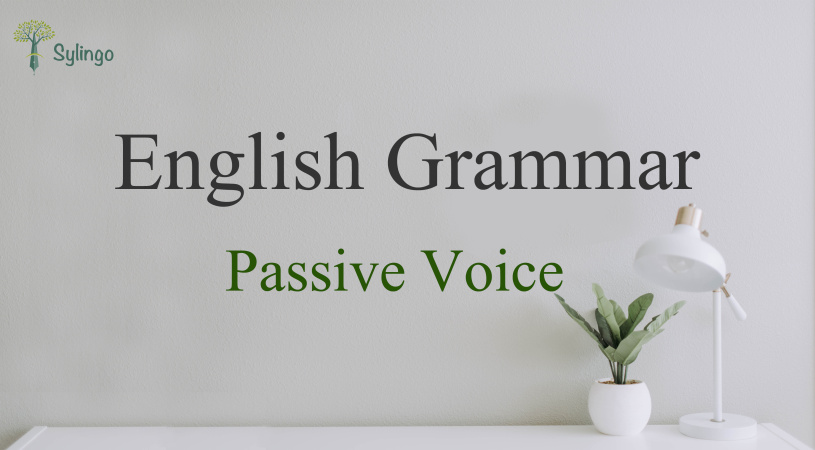The sentence in the passive voice begins with the object, not the subject. In this lesson, we will explain the difference between a sentence in the active and passive voice and the uses of the passive voice.
Uses of the passive voice
1- When the subject is unknown or not mentioned in the sentence.
Example: My house was robbed. (We do not know who stole the house)
2- When the focus is on the verb or the object.
Example: The mail was delivered. (The important thing here is that the mail was delivered, not who received it)
3- Sometimes using passive voice is more polite.
Example: A glass was broken. (Using the passive voice here is better than saying you broke the glass)
Forming passive voice
To form the passive voice, we use the verb be, then put the main verb in the sentence in its third conjugation. Also, we need to know the tense in the sentence because each tense has a different rule.
1- Present simple tense:
The form in active voice is: Subject + verb (present simple) + object
The form in passive voice is: Object + be (present) + verb3 + by + subject
Example: Samer buys bread. → Bread is bought by Samer.
2- Present continuous tense:
The form in active voice is: Subject + verb (present progressive) + object
The form in passive voice is: Object + be (present) + being + verb3 + by + subject
Example: Mom is making a cake. → A cake is being made by mom.
3- Present perfect tense:
The form in active voice is: Subject + verb (present perfect) + object
The form in passive voice is: Object + have (present) + been + verb3 + by + subject
Example: Sally has cleaned the house. → The house has been cleaned by Sally.
4- Simple past tense:
The form in active voice is: Subject + verb (past simple) + object
The form in passive voice is: Object + be (past) + verb3 + by + subject
Example: Amal played the guitar. → The guitar was played by Amal.
5- Past continuous tense:
The form in active voice is: Subject + verb (past progressive) + object
The form in passive voice is: Object + be (past) + being + verb3 + by + subject
Example: His friend was eating chocolate. → The chocolate was being eaten by his friend.
6- Past perfect tense:
The form in active voice is: Subject + verb (past perfect) + object
The form in passive voice is: Object + have (past) + been + verb3 + by + subject
Example: Sarah had fixed the door. → The door had been fixed by Sarah.
7- Simple future tense:
The form in active voice is: Subject + will + verb (infinitive) + object
The form in passive voice is: Object + will + be + verb3 + by + subject
Example: I will finish the essay. → The essay will be finished (by me).
Note: When the subject is a pronoun in a sentence, we can remove (by + subject) in the passive voice form, like in the previous example.
Or the other form in active voice is: Subject + be (present) + going to + verb (infinitive) + object
And the form in passive voice is: Object + be (present) + going to + be + verb3 + by + subject
Example: My mother is going to change the dress. → The dress is going to be changed by my mother.
8- Future continuous tense:
The form in active voice is: Subject + will be + verb (ing) + object
The form in passive voice is: Object + will be + being + verb3 + by + subject
Example: Mark will be washing the dishes. → The dishes will be being washed by Mark.
9- Future perfect tense:
The form in active voice is: Subject + will have + verb3 + object
The form in passive voice is: Object + will have + been + verb3 + by + subject
Example: He will have visited 7 countries. → 7 countries will have been visited by him.
Notes:
1- If there is a modal in a passive voice sentence, we add the verb (be) after the modal verb and put the main verb in the third conjugation.
Example: Tasks must be worked on by you.
2- We do not use the passive voice with the tenses (present perfect continuous - past perfect continuous - future perfect continuous).
That was all about the passive voice and its uses. If you have any questions or suggestions, you can share them in the comments section below.
Exercise
Write passive voice sentences using these words.
1- The house/clean (present simple)
2- The picture/draw (past simple)
3- The glass/break ( past perfect)
4- The window/open (simple future/will)
5- The article/write (present progressive)
Answers
1- The house is cleaned.
2- The picture was drawn.
3- The glass had been broken
4- The window will be opened.
5- The article is being written.





